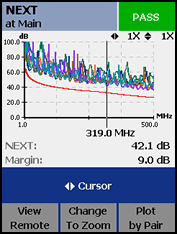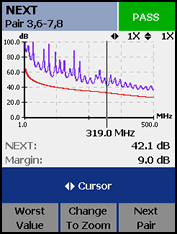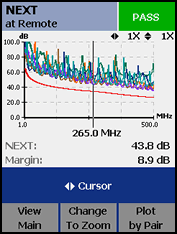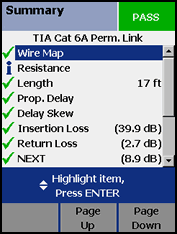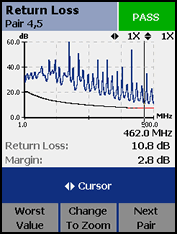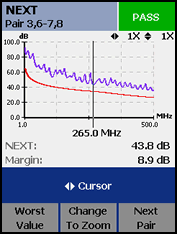Short ANSI/TIA-568-C.2 Category 6A Permanent Links
A YouTube video on this subject is also available from here.
Having trouble getting short links to pass the TIA Category 6A Perm. Link test in the DTX-1800 CableAnalyzer? Been told that field testers cannot test short links?
Testing short Class EA links? Clique aqui.
In Annex J of ANSI/TIA-568-C.2, there is a table indicating a permanent link without a consolidation point should not be less than 10 m, although it is not explicitly stated so. Short Category 6A links (<10 m) may be difficult to pass. It's not impossible, as demonstrated in this article. There are three principle causes of failures/marginal passes on short Category 6A Permanent Links:
Having trouble getting short links to pass the TIA Category 6A Perm. Link test in the DTX-1800 CableAnalyzer? Been told that field testers cannot test short links?
Testing short Class EA links? Clique aqui.
In Annex J of ANSI/TIA-568-C.2, there is a table indicating a permanent link without a consolidation point should not be less than 10 m, although it is not explicitly stated so. Short Category 6A links (<10 m) may be difficult to pass. It's not impossible, as demonstrated in this article. There are three principle causes of failures/marginal passes on short Category 6A Permanent Links:
- Not using the DTX-PLA002 Permanent Link Adapter
Almost all connecting hardware vendors have tuned their jacks to the TIA Test Plug definition found in ANSI/TIA-568-C.2. The tip on the end of the DTX-PLA002 meets the definition for a TIA Test Plug for NEXT, FEXT and Return Loss. So much so, most vendors use the tip from the DTX-PLA002 in their laboratories for testing jacks. Therefore, the best result will always be achieved using the DTX-PLA002, not the DSP-PM06.
- Your connector choice
Check with your vendor on their minimum length requirements. It will vary from vendor to vendor. Try getting your technicians to terminate some short links to verify the expected performance. Minimally compliant components will be an issue.
- Your termination technique
The quality of the termination will be critical. It will have to be perfect in order to avoid a fail or marginal passing result - assuming you have verified 2) above. Expect to see the occasional marginal pass on these short links due to variations in terminations and jacks. Marginal passes are considered a pass unless the contract specifies otherwise. If the contract does not permit marginal passes, you can expect to have to re-terminate some of the jacks in the installation due to variation in terminations, and less likely, replace some of the jacks. The very reason why you test 100% of the links.
Let's look at passing example result from a 17 ft (5,1 m) Category 6A Permanent Link:
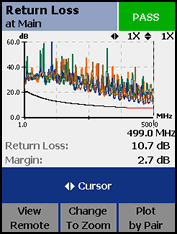
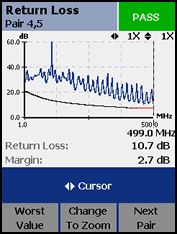
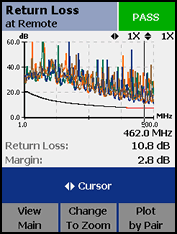
Notice how the limit line seems to have two colors, red and black. That's the 3 dB rule in action, where we ignore the result if the Insertion Loss is less than 3 dB.